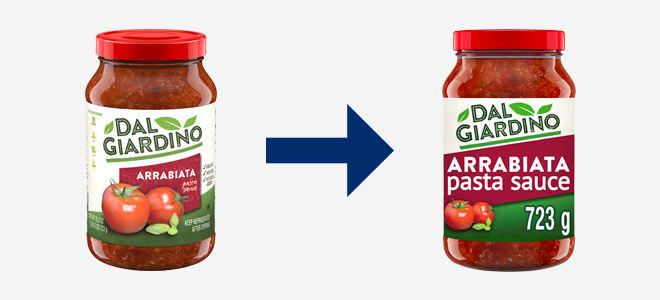October 15, 2018 Opinion piece
Online sales account for an increasing chunk of the retail market, but industry will suffer from a lack of consistency.
Digital initiatives
The retail industry hailed 2017 as the year the consumer went digital.

Last year, seven per cent of all groceries in the UK alone were bought using the internet and by 2022, online shopping will account for 7.5 per cent of all grocery spend, up by more than 50 per cent on today’s rate.
In 2017, it is estimated that two out of every five purchases were made using mobile devices, and according to PwC’s Global Consumer Insights Survey 2018, 50 per cent of all respondents were using smartphones to complete payment at bricks-and-mortar stores.
The coming of age of so-called digital natives – individuals who have grown up with information technology rather than having to adapt to it – is driving the retail world online. The global flourishing of e-marketplaces is a testament to this.
More than 400 online marketplaces now exist worldwide, with the top 75 accounting for combined sales of $1.55tn in 2017. That number is set to grow by 300 per cent through 2021.
With global internet user penetration set to climb above 50 per cent of the world’s population next year and as many as 6bn smartphones in existence by 2020, more eyes on more screens will mean more sales. But this will also mean a more complex and convoluted retail environment.
Standards that go beyond the physical
Since the post-war economic boom, modern commercial industries have had more than half a century to form and gradually reform the way they do business to attune to the changing needs of producers, consumers and the supply chain. By contrast, digital sales have developed at such a pace that industry has had little time or appetite for normalisation.
Information in the online world is currently presented in a myriad of different formats across multiple platforms and in accordance with in-house criteria rather than industry-wide norms.
In the big data age, the result is a morass of information that is often repeated as a whole or in part across the worldwide web in a way that is seldom interoperable.
As well as being repetitious, that information is often everlasting, with the potential for product listings to far outlive the companies that list them.
As e-commerce continues to make inroads into the way that business is transacted in the modern world, there is a pressing need for a formal, standardised way in which to trade.
First steps
As screens have become smaller and more abundant, the way that products are represented online is becoming an increasingly important part of the customer experience. Consequently, the way that the retail industry communicates information to consumers is having to shift to reflect that change.

This year, retailers including Tesco, Asda, Carrefour and Walmart, brands like Unilever, Coca Cola, L’Oréal and Nestlé and tech giant Google, have come together to agree a set of unified principles for product imagery.
The GS1 Mobile Ready Hero Images Guideline will make it easier for consumers to shop quickly and precisely for their desired products, recognising that co-development of standards can alleviate the complexity and confusion of an existing problem.
The next step for industry will be to future-proof the way that data is structured from the very outset.
Rapidly shifting sands
A new commercial reality has given rise to a new type of consumer, one that wants to know about information ranging from provenance to dietary and ethical issues.
According to Allergy UK, 44 per cent of British adults now suffer from at least one allergy, with projections showing that half of the population of the European Union will be affected by allergies and intolerances by 2025.
To underscore the gravity of the situation, recent deaths in the UK caused by inadequately labelled food items have shown the potential dangers of unaccounted for ingredients.
As well as allergen information, professional service company, KPMG, found that one in five shoppers were influenced by sustainability when selecting delivery options.
The consumer demand for richer product information is defining the next wave of development for retail technology.
Digital twins
The evermore connected internet of things has allowed us to have the “digital twin” of something that exists in the physical world, be it a person, place, process or system.

In a retail context, the Digital Link is the pending digital twin of the physical barcode, which inserts the “barcode number”, known as the Global Trade Item Number (GTIN), into a URL.
As well as hardcoding that unique, trusted and traceable product identifier into a weblink, Digital Link also has the potential to act as the gateway to a bundle of different online sources that highlight everything from product attributes to special offers.
In this way, a single, short and shareable link can be the conduit for a raft of information that can be periodically updated for retailers, suppliers and consumers alike.
Blockchain and beyond
It is best known as the zeitgeist technology that underpins cryptocurrencies like Bitcoin, but blockchain and its distributed ledger system have the potential to be used in fields far removed from the world of finance.

Everything from the management of patients and their records across the healthcare sector to anonymous online voting could be accomplished by blockchain applications in the fulness of time.
But if blockchain is to go from buzzword to business critical, it should be founded on its ability to work seamlessly and interoperably.
A baseline of standards – from terminology and taxonomy to the technology itself – will be necessary to simplify the emergent landscape and ease the concerns of companies around the transition to a new way of working.
In many cases, standards already exist to identify people, products and places that could be adopted into the blockchain framework. In areas that need elaboration or the fresh creation of standards, a covenantal approach is essential, with open dialogue between users and standards organisations to co-develop the best possible solution for industry requirements.
As retailers look towards the implementation of augmented and mixed reality into their customer experience, front-loading standardisation into the next generation of digital technology is an opportunity that businesses should be taking as a matter of course.
Playing catch-up in the time of the digital consumer is not a smart move.

![]() www.linkedin.com/gary-lynch
www.linkedin.com/gary-lynch
![]() @gary_gs1uk
@gary_gs1uk
Related
Building our community and our services - GS1 UK Annual Review - 2017-18